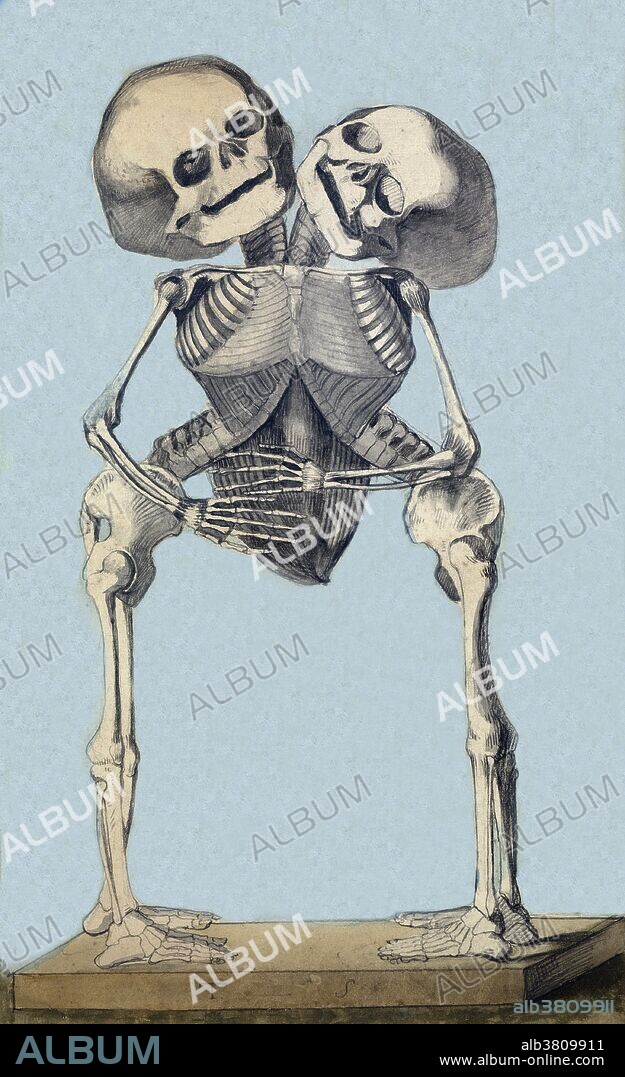alb3809911
Conjoined Twins Skeleton, 19th Century

|
Add to another lightbox |
|
Add to another lightbox |



Buy this image.
Select the use:

Title:
Conjoined Twins Skeleton, 19th Century
Caption:
Skeleton of conjoined twins. Conjoined twins are identical twins born with their bodies joined at some point and having varying degrees of residual duplication, a result of the incomplete division of the ovum from which the twins developed. An extremely rare phenomenon, the occurrence is estimated to range from 1 in 49,000 births to 1 in 189,000 births, with a somewhat higher incidence in Southeast Asia and Africa. Approximately half are stillborn, and an additional one-third die within 24 hours. Most live births are female, with a ratio of 3:1. Appears to be a thoraco-omphalopagus (28% of cases): two bodies fused from the upper chest to the lower chest. These twins usually share a heart, and may also share the liver or part of the digestive system OR Thoracopagus (18.5%): two bodies fused from the upper thorax to lower belly. The heart is always involved in these cases.
Credit:
Album / Science Source / Wellcome Images
Releases:
Model: No - Property: No
Rights questions?
Rights questions?
Image size:
2930 x 4800 px | 40.2 MB
Print size:
24.8 x 40.6 cm | 9.8 x 16.0 in (300 dpi)
Keywords:
19TH CENTURY • ART • ARTWORK • BIRTH DEFECT • BIZARRE • CONGENITAL DISORDER • CONJOINED TWINS • CONJOINED • CREEPY • DRAWING • EERIE • FULL FIGURE • HISTORIC • HISTORICAL • HISTORY • HUMAN BONES • IDENTICAL TWINS • ILLUSTRATION • ILLUSTRATIONS • JOINED IN UTERO • KITSCH • MEDICAL • MEDICINAL • MEDICINE • ODD • PECULIAR • QUIRKY • SCARY • SCIENCE • SIAMESE TWINS • SIAMESE • SIAMESES • SKELETAL • SKELETON • STRANGE • TERATOLOGY • THORACO-OMPHALOPAGUS TWINS • THORACO-OMPHALOPAGUS • THORACOPAGUS TWINS • THORACOPAGUS • TWINS, SIAMESE • UNUSUAL • WACKY • WEIRD
 Pinterest
Pinterest Twitter
Twitter Facebook
Facebook Copy link
Copy link Email
Email
